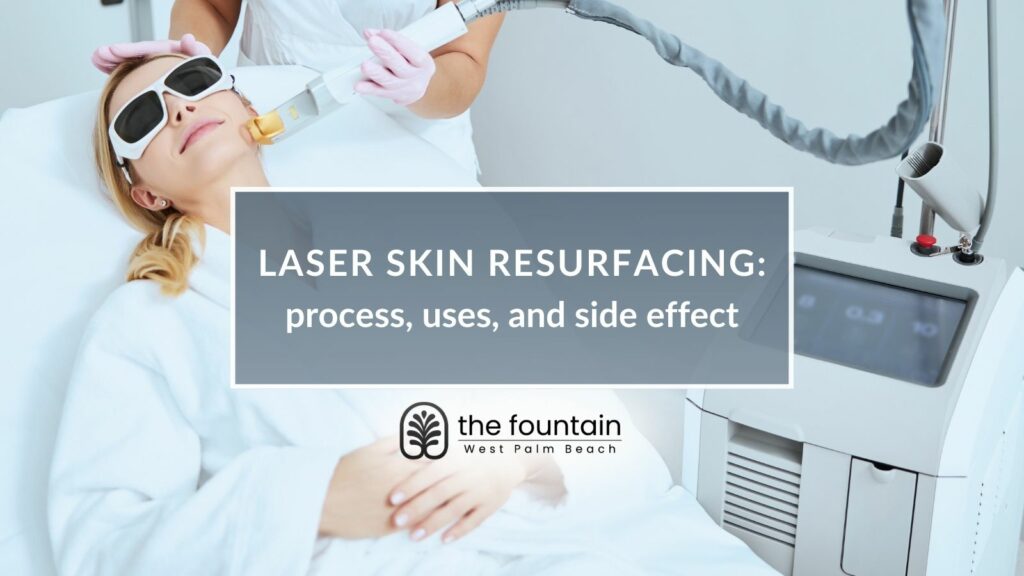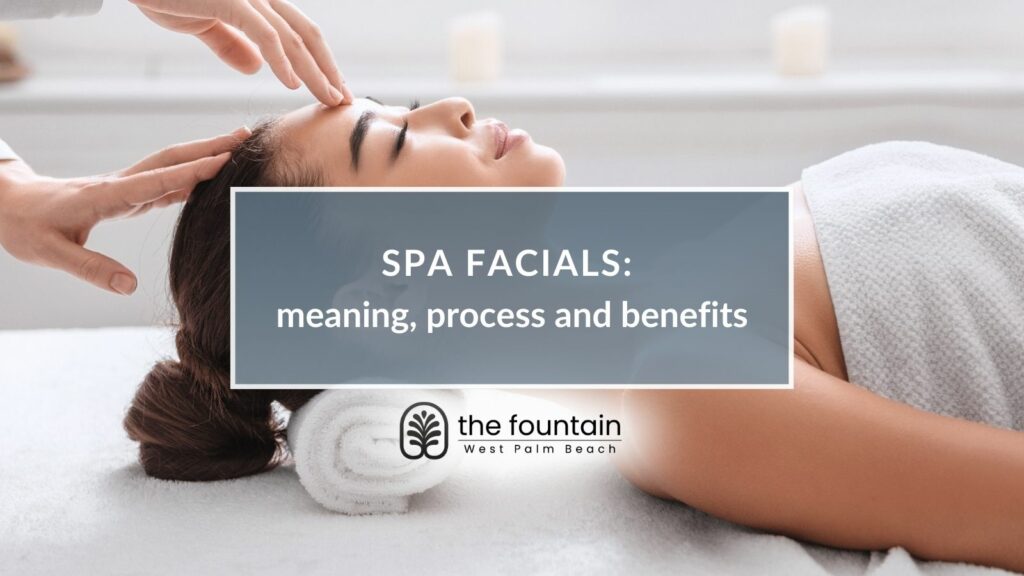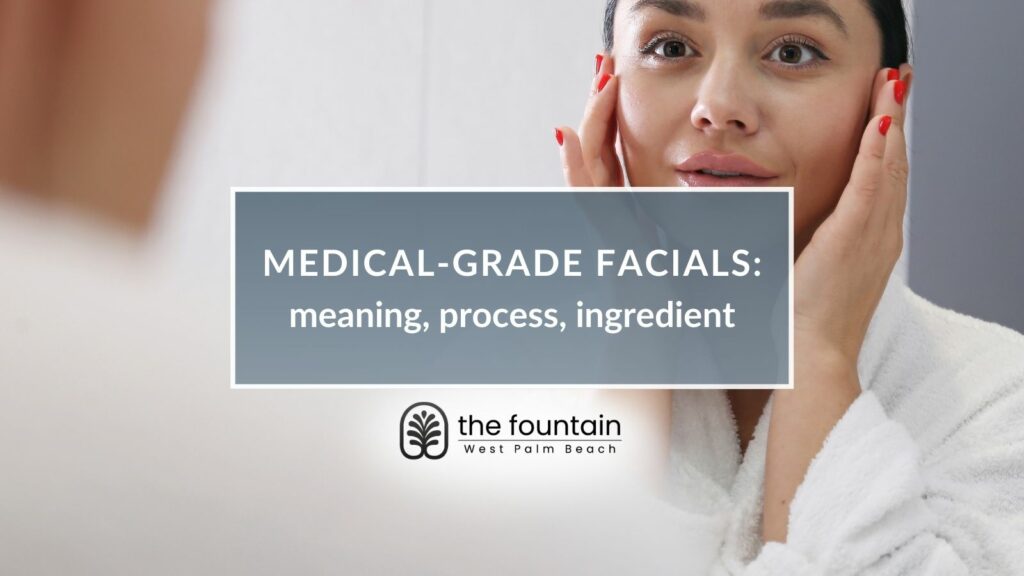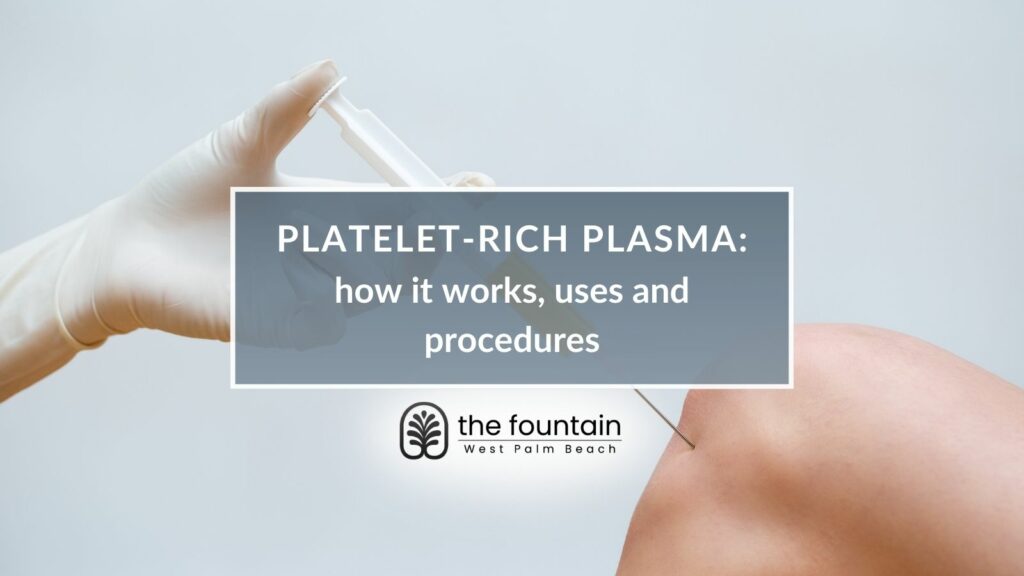Laser skin resurfacing is a cutting-edge cosmetic procedure to rejuvenate and enhance the skin’s appearance. Using advanced laser technology, dermatologists perform this treatment to address various skin concerns and promote a more youthful complexion. By precisely targeting and removing damaged skin cells, laser resurfacing stimulates the skin’s natural regeneration process, fostering the growth of fresh, radiant skin.
Laser skin resurfacing begins with a comprehensive consultation to determine candidacy and tailor the procedure to individual needs. Depending on the desired outcomes, specialized lasers are used during the procedure for localized or full-face treatment. Following meticulous post-procedural care, patients undergo a transformative journey as their skin heals and renews, revealing smoother, revitalized skin.
Laser skin resurfacing offers a versatile solution for an array of skin imperfections, including fine lines, wrinkles, scars, uneven skin tone, and sun damage. Whether targeting specific concerns like acne scars or aiming for overall skin revitalization, laser resurfacing is a powerful tool for achieving radiant, youthful skin.
Despite its remarkable results, laser skin resurfacing entails temporary side effects such as inflammation, swelling, and sensitivity. Additionally, there are risks of sun sensitivity, hyperpigmentation, and infection.
What is Laser Skin Resurfacing?
Laser skin resurfacing is a cosmetic procedure dermatologists perform to rejuvenate and enhance the skin’s appearance. This treatment involves using lasers to precisely remove the top layer of skin cells, known as the epidermis, as well as the outer cells of the dermis, the second layer of the skin. This stimulates the growth of new skin cells and boosts collagen production, contributing to a smoother, plumper complexion.
Laser skin resurfacing involves intentionally injuring the skin to promote regeneration. The procedure addresses various skin concerns, including age spots, scars (such as those from acne), fine lines and wrinkles, warts, certain types of birthmarks, large pores, and sun damage.
Types of Laser Used for Skin Resurfacing
Laser skin resurfacing offers different approaches to address various skin concerns, each utilizing specific lasers tailored to individual needs.
1. Ablative Laser
Ablative laser treatments involve removing the thin outer layer of skin (epidermis) and heating the underlying skin (dermis) to stimulate collagen growth, improving skin firmness and texture. The two primary ablative lasers are carbon dioxide (CO2) and erbium.
2. CO2 Laser Resurfacing
This method has been extensively used to treat wrinkles around the eyes and mouth, scars, warts, and other skin conditions, as mentioned by Verma N. et al. 2023, “Ablative Laser Resurfacing.” The latest version, fractionated CO2 laser resurfacing, employs short pulsed light energy to remove thin layers of skin with minimal heat damage, resulting in smoother skin. However, it often causes hyperpigmentation or scarring in individuals with darker skin tones, and recovery typically takes up to two weeks.
3. Erbium Laser Resurfacing
Designed to target superficial and moderately deep lines and wrinkles, erbium laser resurfacing offers minimal injury to surrounding tissue compared to CO2 lasers. It causes fewer side effects like swelling, bruising, and redness, leading to a faster recovery of about one week. It is suitable for individuals with darker skin tones, although there is still a risk of skin discoloration post-treatment.
4. Nonablative Laser or Light Source
Nonablative lasers stimulate collagen growth but involve a less aggressive approach with shorter recovery times, as discussed in Kim K. H. et al. 2004, “Nonablative laser and light therapies for skin rejuvenation.” Common types include pulsed-dye lasers, erbium (Er: YAG) lasers, and intense pulsed light (IPL) therapy.
5. Neodymium Yag Laser
This laser is particularly suitable for individuals with darker skin tones. It penetrates deeper into the skin, bypassing the melanin of the upper skin layers. It is used for various purposes, including hair and tattoo removal, birthmark removal, acne treatment, and reducing hyperpigmentation and vascular issues.
6. Pulse-Dye Lasers
Also known as vascular lasers, pulse-dye lasers target skin issues related to blood vessels, such as redness, hyperpigmentation, broken capillaries, and rosacea. They emit concentrated yellow light to heat the skin and absorb pigments, offering effective treatment with minimal downtime.
7. Fractional Lasers
These lasers treat only a fraction of the skin, reducing downtime while addressing age-related blemishes, hyperpigmentation, acne scars, and wrinkles. Fractional lasers are ablative or non-ablative and are known for their ability to tighten skin by stimulating collagen production. However, there’s a greater risk of complicated healing and scarring with deeper penetration of laser light.
8. IPL (Intense Pulsed Light)
While not technically lasers, IPL treatments are commonly used for similar skin issues. They target specific colors in the skin to repair scarring, sun damage, stretch marks, acne, rosacea, birthmarks, hyperpigmentation, and unwanted hair. IPL offers versatility in addressing multiple skin concerns with minimal discomfort.
How is Laser Skin Resurfacing Done?
Laser skin resurfacing is a precise procedure performed by a qualified healthcare professional. Here’s an overview of the process:
Consultation and Preparation
Start by consulting a plastic surgeon or dermatologist to determine if you’re a suitable candidate for the procedure. Disclose any medical history, medications, or supplements you’re taking, especially those that can affect clotting. Inform your doctor if you have a history of cold sores or fever blisters, as laser resurfacing often triggers breakouts in susceptible individuals.
Your doctor often advises you to refrain from certain medications or supplements for up to 10 days before the surgery and to quit smoking two weeks before and after the procedure to aid in healing. Antibiotic and antiviral medications are prescribed to prevent infections and cold sore outbreaks.
Procedure
- Laser skin resurfacing is typically performed by a plastic surgeon or dermatologist as an outpatient procedure, meaning you can return home the same day.
- Depending on your needs, the treated area is localized or covers the entire face.
- For localized treatments, the doctor administers a local anesthetic to numb the area, sometimes supplemented with sedation for relaxation. General anesthesia is used for full-face treatments or extensive procedures.
- The laser is applied to remove targeted skin cells, stimulating collagen production and skin regeneration.
- The procedure duration varies based on the treated area, ranging from 30 minutes to two hours.
Aftercare
- Following the procedure, the treated areas are bandaged, and you experience swelling, itching, or stinging, which are normal reactions.
- The doctor often prescribes pain relievers; applying ice packs helps reduce swelling and discomfort.
- Clean the treated areas daily and apply ointment to prevent scab formation.
- Swelling and sensitivity often persist for several days, and your skin peels after five to seven days.
- Healing typically takes 10 to 21 days, during which time you should avoid sun exposure and wear sunscreen with SPF 30 or higher.
- Moisturize your skin regularly, and refrain from using irritating products until your skin has fully healed.
- Follow-up appointments with your doctor are necessary to monitor your progress and address any concerns or complications.
What is Laser Skin Resurfacing Used for?
Laser skin resurfacing is a versatile cosmetic procedure with various applications.
- Fine Lines and Wrinkles: Laser skin resurfacing is effective in reducing the appearance of fine lines and wrinkles, particularly around the eyes, mouth, and forehead.
- Scars: It helps diminish shallow scars caused by acne or other skin conditions and scars from injuries or surgical procedures.
- Uneven Skin Tone or Texture: The procedure addresses uneven skin tone or texture, including age spots, sun damage, and discoloration.
- Sun-Damaged Skin: Laser resurfacing is beneficial for repairing sun-damaged skin, improving its texture and overall appearance.
- Acne Scars: It effectively treats mild to moderate acne scars, restoring smoother and clearer skin.
What are the Side Effects of Laser Skin Resurfacing?
Laser skin resurfacing, while effectively addressing various skin concerns, often results in temporary side effects, as mentioned by Prohaska J. et al. 2023, “Laser Complications.” These include:
- Inflammation and Swelling: The treated skin often becomes inflamed, swollen, and tender immediately after the procedure. Swelling persists for several days to weeks, particularly with ablative approaches.
- Skin Sensations: Patients experience itching, soreness, or a burning sensation in the treated area. These sensations typically subside within a few days but sometimes last longer.
- Skin Dryness and Peeling: Dryness and skin peeling are common side effects, usually occurring 5–7 days post-treatment. They are a natural part of the healing process, as the old, damaged skin is shed to reveal new, rejuvenated skin underneath.
- Sun Sensitivity and Hyperpigmentation: Laser resurfacing increases sensitivity to sunlight, making the skin more prone to sunburn. Exposure to the sun without adequate protection often leads to hyperpigmentation, where patches of skin become darker than the surrounding area. This effect can last up to a year.
- Other Skin Changes: Other potential side effects include the development of milia (small white bumps), acne flare-ups, and changes in skin color, such as hyperpigmentation or hypopigmentation. Darker skin tones are often more susceptible to permanent changes in pigmentation.
- Infection Risk: Laser resurfacing risks bacterial, viral (such as herpes simplex), or fungal infections. Precautions, such as using antibiotics and antiviral medications before and after the procedure, help minimize this risk.
- Scarring: While rare, scarring can occur, particularly with ablative laser resurfacing. Patients with a history of keloid scars or those who have undergone previous laser treatments are at a higher risk.
How many laser skin resurfacing sessions are typically needed for noticeable results?
Laser skin resurfacing sessions for noticeable results often vary depending on the individual’s skin condition and treatment goals. Some may see results after a single session, while others require multiple sessions spaced several weeks apart for optimal results.
Can laser skin resurfacing be performed on areas other than the face?
Laser skin resurfacing can be performed on various body parts, including the neck, chest, hands, and arms, to address specific skin concerns such as wrinkles, sun damage, and scars.
Are there any long-term effects of laser skin resurfacing on the skin’s health?
There are generally no long-term effects of laser skin resurfacing on the skin’s health. When performed by a qualified professional, laser skin resurfacing is typically safe and can promote long-term skin health by stimulating collagen production and improving skin texture.
How does Platelet-Rich Plasma (PRP) therapy complement laser skin resurfacing?
Platelet-Rich Plasma (PRP) therapy can complement laser skin resurfacing by enhancing the healing process and promoting skin rejuvenation. PRP involves using a sample of the patient’s own blood, processing it to concentrate the platelets, and then re-injecting it into the skin. The growth factors in PRP can help speed up recovery and boost the effects of laser treatment.
How do medical-grade facials complement laser skin resurfacing?
Medical-grade facials can complement laser skin resurfacing by preparing the skin before the procedure and aiding in the healing process afterward. These facials are tailored to cleanse, exfoliate, and hydrate the skin, creating a healthier skin environment that can maximize the effects of laser treatments and promote faster recovery.
Is laser skin resurfacing suitable for all skin types and tones?
Laser skin resurfacing is not suitable for all skin types and tones. While advancements in laser technology have made it safer for a wider range of skin tones, individuals with darker skin tones may still have an increased risk of pigmentation changes or scarring.
How soon can I resume my normal skincare routine after laser skin resurfacing?
You can resume your normal skincare routine after laser skin resurfacing once your skin has fully healed. Usually, within a few weeks to a month after the procedure, you can gradually reintroduce your regular skincare products and routines.





